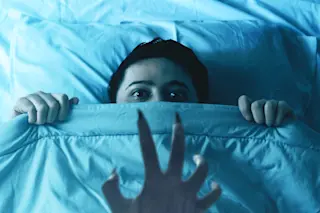Sleep paralysis, a phenomenon as intriguing as it is frightening, captures the attention of both scientists and those who experience its eerie grip. Characterized by an inability to move or speak upon waking or falling asleep, this sleep disorder often comes with an unsettling, ominous presence.
Find out why it happens and how different cultures interpret these chilling sleep paralysis demons.
(Credit: Henry Fuseli, public domain/Wikimedia Commons)
Henry Fuseli, public domain/Wikimedia Commons
A "sleep paralysis demon" is a term often used to describe the terrifying hallucinations that some people experience during an episode of sleep paralysis. Sleep paralysis is a parasomnia (or sleep disorder) in which a person is fully awake and aware but cannot move or speak. It’s often accompanied by the perception of a sinister presence, vivid hallucinations, and a feeling of suffocation. Some people may even feel a sense of impending death.
Sleep paralysis is distinct from ...















